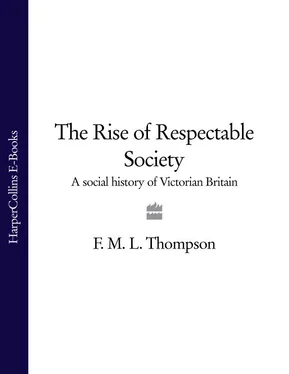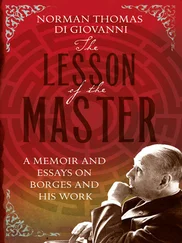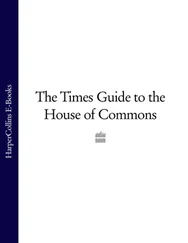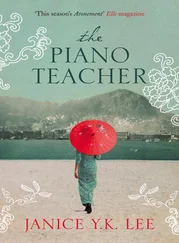The clerks could well have added that it was important to their social self-esteem to make it clear that they were different from the working classes who bred like rabbits, and that far from there being any question of emulating their superiors they were engaged in underlining contrasts with their inferiors. The working classes, however, were far from homogeneous in their family habits; they were not all big breeders; and it is more than doubtful if they were in the business of emulating the middle classes themselves. Although unreflecting and vulgar Malthusians had spoken as though the lower orders were an undifferentiated, uneducated, and unbridled mass, heedlessly indulging in imprudently youthful marriages and insupportably large families, it is fairly obvious that there always had been different groups within the working classes, with different attitudes towards marriage and children. The apprenticeship system in the traditional skilled trades had always been regarded as a check upon headlong breeding, since the rules stipulated that an apprentice might not marry until he had served his term, normally seven years. The decay and erosion of the apprenticeship system has often been cited as a factor stimulating population increase in the eighteenth century, via earlier marriages. On the other hand, while formal and enforceable apprenticeship may have been withering, the enforcement of effective substitutes continued to be a prime aim of the trade societies not merely in the older crafts but also in the new skilled occupations generated by industrialization. Insofar as boilermakers or engine-makers were successful in controlling entry into their trades through monitoring the flow of trainees, and older trades such as those of compositors or masons succeeded in maintaining their traditional practices, similar effects in restraining early marriages might have been expected to continue. In any case, the skilled tradesmen of the labour aristocracy had powerful motives of self-respect and status-protection, quite aside from any possible sexual or marital frustrations imposed by their training conditions, for wishing to confine their families to sizes which they could afford to support in respectable conditions. The difficulty is that the earliest firm foundation for observations on family sizes, the 1911 fertility census, does not give clear support to any such simple explanation and classification in terms of economically and socially rational behaviour.
The situation reached by 1911 was, indeed, one of apparently orderly and rational progression in average family sizes in a league table of working-class occupational groups that ran from the textile workers with the smallest families of 3.19 children to the miners with the largest, 4.33 children, the intermediate steps being occupied, in ascending order, by skilled workers, semi-skilled workers, unskilled workers, and agricultural labourers. It has been readily assumed that this hierarchy was not a recent development, but reflected differential behaviour that had long been established. In particular, it has been inferred from the 1911 position that textile workers were the pioneers among the working classes in family planning, and explanations of behaviour patterns have been focused upon them, and upon the opposite extreme, the miners. Before becoming unduly impressed by circumstantial evidence drawn from the 1830s and 1840s – that textile workers were exceptionally exposed to birth-control literature and ideas and exceptionally responsive to them because of their distinctive employment patterns – it is however as well to reflect on the prehistory of family limitation in specific occupational groups which is revealed by the 1911 census. This shows that for pre-1861 marriages, whose couples were still living in 1911 (a sample biased by above-average longevity), the largest families of around eight or more children were indeed produced by coalminers and agricultural labourers, but masons and boilermakers were within a decimal point or so of producing the same number of children. Similarly, the smallest families were those of spinners and weavers in the woollen and worsted industries, of six and 6.86 children; but their comparative, although not outstanding, frugality was matched by other groups with fewer than seven children, domestic gardeners, domestic indoor servants, and railway signalmen and porters. The families of cotton spinners and weavers of this vintage, often regarded as in the vanguard of liberation or depravity – depending on how family limitation was regarded – were in fact of middling size, around 7.5 children. There was nothing to distinguish them, in this respect, from many other working-class groups, ranging from printers and compositors through railway guards and railway labourers to dock labourers; they were exceedingly average couples in their reproductive performance.
Mine owners and managers, as well as miners, had families of more than eight children in the mid-Victorian years during which the children of these pre-1861 marriages were being born. So also did butchers and master builders. There was, therefore, nothing peculiarly working-class about large families, even if it had already become rather peculiar for groups with middle-class status or pretensions to breed to this extent. It is indeed probable that an average score of something like eight children born alive was the normal tally for families regardless of social class or occupation, until particular and differential influences began to operate to encourage limitation. The average, of course, embraced individual families running up to twelve or thirteen children as well as childless couples; and it included all children born alive, so that infant and child mortality with their differing impact on different classes winnowed down the number of children who survived into their teens in proportions that were not socially uniform. Nevertheless, it is wildly improbable that colliery managers or butchers, coalminers or textile workers, had the remotest idea of the relative risks they might face from infant and child mortality, and implausible to imagine that they thought of controlling the number of their conceptions with a view to ending up with some target number of grown-up children. On the contrary, it is likely that pregnancies were allowed to happen as they listed, until such time as motives for trying to limit pregnancies became insistent.
Occupational distinctions do not point to any single, simple explanation for those motives becoming insistent when they did in different sections of the working classes. The vanguard in the move to smaller families included most railwaymen, but not the engine drivers; most domestic servants, but not gamekeepers; most textile workers, but not cotton spinners; printers and compositors, but not cabinet-makers. It is difficult to see what these groups had in common. It is easier to observe that the groups which started later but had caught up by the 1880s – engine drivers, fitters and erectors, cabinet-makers, and shoemakers – were predominantly skilled workers, although this observation tends to undermine any notion that skilled workers had always been predisposed to restraint on grounds of preservation of their superior status and job-training constraints on early marriage. It is also easy to see that those who were still producing comparatively large families right up to the end of the nineteenth century, of more than five children – and in the case of coalminers, more than six – were mainly those engaged in heavy manual labour. They were agricultural labourers, builders’ labourers, dock workers, and of course, the coalminers themselves. But gamekeepers, boilermakers, and masons were in the same league clinging to large families for longer than the rest of society, and these were clearly not occupations characterized by lack of education or skill.
Читать дальше












